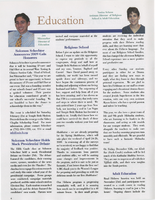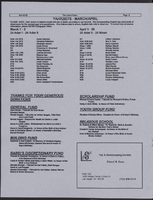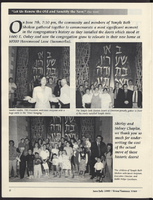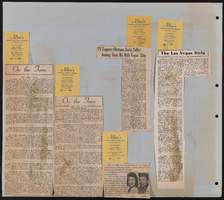Search the Special Collections and Archives Portal
Search Results
Leon Carter, Sr. Photographs
Identifier
Abstract
This collection has been removed from the University of Nevada, Las Vegas Libraries Special Collections and Archives' holdings by request of the donor. The collection was returned to the donor. Please contact special.collections@unlv.edu for further information.
The Leon Carter, Sr. Photographs (approximately 1948-2019) primarily contain photographic prints documenting Leon Carter, Sr.'s life living in Las Vegas, Nevada. Included are photographs of Carter, his brother John L. Carter, members of the Carter family, and snapshots from the Helldorado Days parade in the mid-1960s. The collection includes a photograph of Carter as a table dealer, a facsimile photograph of Carter when he played baseball in Canada in the early 1950s, and his yearbook portrait. Materials also include a brochure from Carter's political campaign running for County Commissioner in 1972, and a 1989 certificate of appreciation to Carter from the Las Vegas Breakfasters Lions Club.
Archival Collection
University of Nevada, Las Vegas Foundation Records
Identifier
Abstract
The University of Nevada, Las Vegas (UNLV) Foundation Records (1981-2013) primarily contain photographs, slides, negatives, and proof sheets from Foundation events, fundraisers, and projects. The collection also contains VHS copies of interviews and newscasts pertaining to the UNLV Foundation, annual dinner programs and invitations, and various publications created by the Foundation. The UNLV Foundation is located on the UNLV campus in Las Vegas, Nevada and is a nonprofit organization that seeks and manages gifts to the University of Nevada, Las Vegas.
Archival Collection
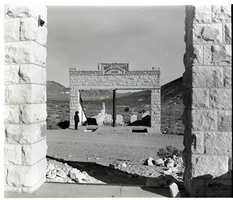
Film transparency of the ruins of the H. D. and L. D. Porter Brothers Store, Rhyolite, Nevada, November 25, 1948
Date
Archival Collection
Description
Image

Alpha Kappa Alpha Sorority program calendar
Date
Archival Collection
Description
From the Alpha Kappa Alpha Sorority, Incorporated, Theta Theta Omega Chapter Records (MS-01014) -- Chapter records file.
Text

Transcript of interview with Della Mae Rostine by Irene Rostine, October 31, 1991
Date
Archival Collection
Description
Della Mae Rostine left Missouri with her husband, Rocco, in 1942, and headed to Las Vegas. Happy to leave behind the hard life and instability the mining industry had to offer, after living in Las Vegas for the first year the couple settled in Henderson, Nevada, known as the townsite at that time. Della Mae’s oral history provides readers with a glimpse of what life was like for the 14,000-plus individuals and families who also moved to southern Nevada during the same period in order to make a living in the growing “war work” industry the area had to offer. Della Mae shares the hardships faced in finding housing, especially for families with children. She discusses challenges ranging from securing home furnishings to purchasing groceries, including the rations on gasoline and butter at that time. Della Mae also discusses her experiences with the Basic Magnesium plant where her husband was hired as a construction worker in the early days of the plant and where she would work briefly as a machinist making shell casings and monitoring the down time on the production line. She also touches briefly on the social opportunities the BMI plant, and later Rheem Manufacturing, offered to the workers and their families. When World War II ended, more than half of residents of the townsite left, leaving fewer than 7,000 people to form what would later become the city of Henderson, Nevada. Della Mae’s oral history is a brief overview of a family life which began when BMI was just getting off the ground and continued through the many changes that took place in the BMI complex and the town site over several decades. The timing of the Rostine family’s arrival and the fact that they stayed and made a permanent home in Henderson led to their designation as one of Henderson’s “founding families.”
Text

